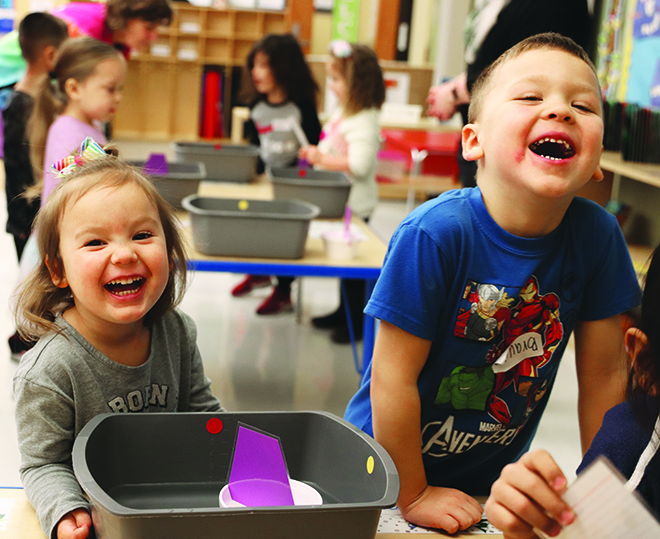
By Kalvin Valdillez, Tulalip News
“I love science a lot because it makes me happy,” exclaimed young Taliah Bradford. “I like doing experiments at school with my friends.”
Every Friday the pre-school students of the Betty J. Taylor Early Learning Academy (TELA) gather in the Deer classroom for Little Science Lab to learn about the wondrous world of STEM (science, technology, engineering and math). Sitting crisscross applesauce, the students give their undivided attention to Ms. Pam, of the Imagine Children’s Museum, as she guides them through thirty minutes of hands-on activities where they learn how the universe operates.
On the morning of January 31, the kids hurried to their seats to learn about one of Mother Earth’s elements, air. As she began her lesson, Ms. Pam asked the students the name of the layer of air and gasses that encompasses the earth, hinting they learned about it during their last class. Once it clicked, the students all called out together, ‘the atmosphere’.
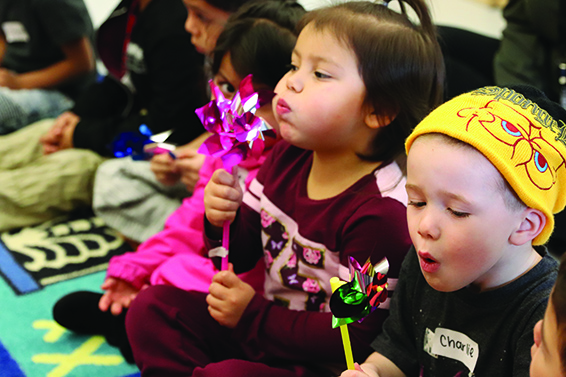
“It’s amazing to see these young 3 and 4-year-olds use advanced science vocabulary,” stated Teddy Dillingham, Imagine Children’s Museum newly appointed Grants Manager and former Director of Education. “They are using that vocabulary correctly and are remembering everything. That’s really helping set them up for future success in school because it’s building their confidence and their love for STEM.”
The idea of the Little Science Labs began back in 2017 when Tulalip Charitable Fund Director, Marilyn Sheldon, encouraged the children’s museum to apply for funding through the Charitable Fund, and bring some of their experiments to the children of Tulalip.
“We’re really grateful for the Tulalip Tribes, they’ve been a longtime supporter of the museum and it seemed like a really great fit,” Teddy expressed. “Because of the Charitable Fund, we now have weekly classes here. For the academy’s summer program, we bring out our Museum on-the-go programs and align our lesson with the topics the teachers are covering. For instance, when they had their dinosaur week last summer, we brought our dino class to them.
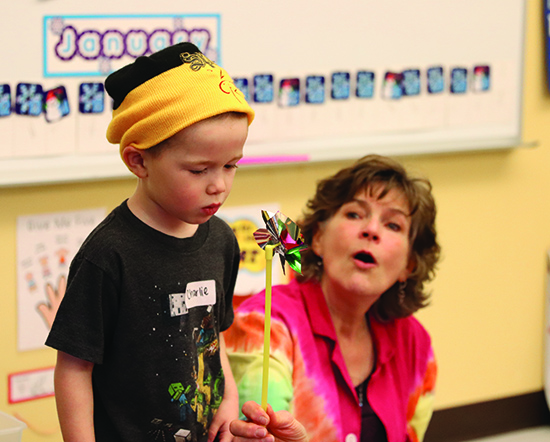
“We also have quarterly family nights where the children can bring their families and do some of these similar activities and play at the museum. It’s really fun and the caregivers have shared they are doing some of our activities at home with their children. We have a unit on shells, and when they go to the beach, the kids are identifying the shells that they are seeing. They are finding applications in their daily life and using it, which is the ultimate goal.”
The kids continued to learn about air by playing with pinwheels, participating in interactive story time, and experimenting with sailboats made of styrofoam bowls and laminated construction paper. Blowing air in all directions, the kids watched its effect take place right before their eyes.
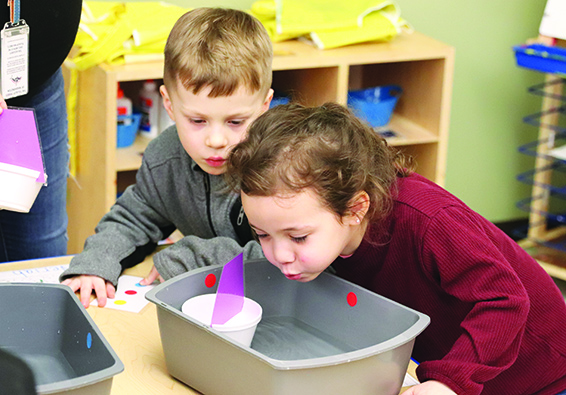
“I learned that air is everywhere around us,” said TELA student Cameron, as she moved her arms in big circles through the air. “We played with the boats and we blew on them to make wind and make them move. And if there’s no wind for the sail, the boat gets stuck in the same spot. I liked the story today too, it was really good. I was a butterfly!”
Last year, the established partnership between TELA and the Imagine Children’s Museum led to additional funding from the Tribe to offer free museum memberships to all enrolled Tulalip tribal members. This resulted in over 150 sign-ups and approximately 1,000 visits from Tulalip families so far. And due to more and more kids developing a love for STEM in today’s techy world, the Museum is now more popular than ever, and therefore, are working to expand their space by adding another level to their building and extending their base as far as their property line allows.
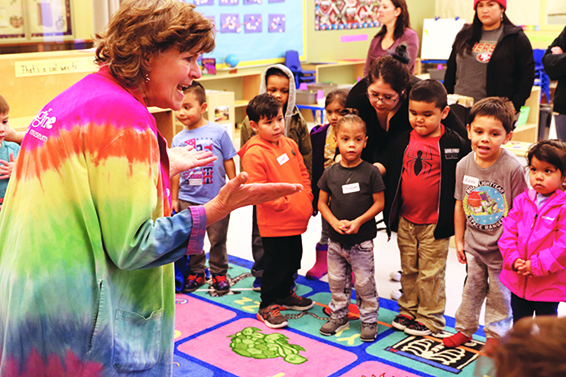
“As these students go through school and learn about the atmosphere, they are going to have this memory,” Teddy stated. “I’m a former science teacher and taught junior high. When kids showed up, they already had a vision of themselves as non-scientists, or that science is scary or science is hard. A lot of the grown-ups in their lives also had negative experiences with science. We’re setting up children when they’re young to show them how fun STEM can be, so they feel confident with it. One day they will look back and say, ‘oh yeah we blew on the boats and experimented with the balloons and pinwheels’. And they’re going to feel like, ‘okay, I already know this and can totally do this’.”
For more information about the Imagine Children’s Museum, please visit www.imaginecm.org